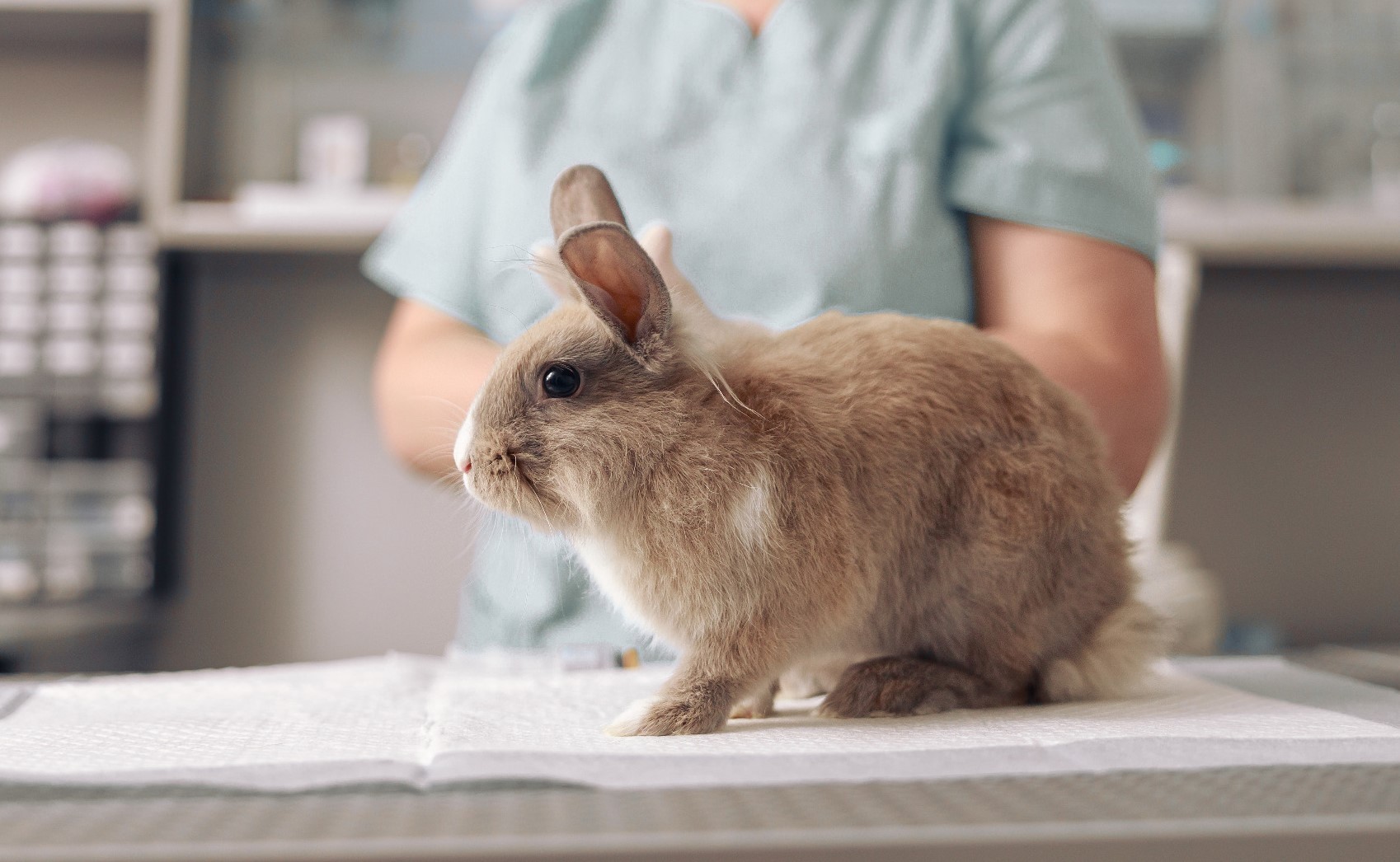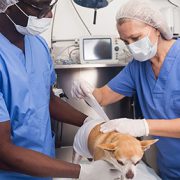Incidental osteoarthritis: risk factors, prevalence and clinical evidence in rabbits
Incidental osteoarthritis: risk factors, prevalence and clinical evidence in rabbits

Requires membership/payment
This article can be accessed via RCVS Knowledge Library Membership (click here).
In our edition of: Apr 2024
In our categories of: exotics
our summary:
Bagha, F. and Keeble, E. (2024) Incidental osteoarthritis: risk factors, prevalence and clinical evidence in rabbits. Companion Animal, 29 (2), pp. 2-5.
The aim of this retrospective study was to evaluate the risk factors, prevalence, and clinical evidence of appendicular osteoarthritis in pet rabbits. The authors hypothesised that prevalence would increase with increasing age and weight, and that clinical detection would be low due to the prey status of rabbits and their ability to hide pain.
The study evaluated the computed tomography (CT) reports of rabbits admitted to a UK veterinary hospital for a full body CT scan for any reason between 2017-2021. The CT reports were assessed for changes indicating presence of osteoarthritis and corresponding clinical examination notes were assessed for descriptions of ‘stiffness’, ‘reduced range of motion’ or ‘resistance/pain on manipulation of the limbs or joints.’ Based on the examination of the clinical notes a decision was made as to whether the condition was clinically apparent at the time of the CT and the case was allocated to either the ‘clinically apparent’ or ‘clinically non-apparent’ group. Information on the joints involved, age, weight, body condition, breed, sex, and neuter status were gathered for analysis.
A total of 311 individual CT reports were assessed. Of these 61/311 (19.6%) described the presence of osteoarthritis in at least one joint or joint pair. Of the rabbits with osteoarthritis 33/61 (54.1%) had more than one joint type affected and 17/61 (27.9%) had three or more joint types affected. The most frequently affected joints were the elbow and the stifle 44/311 (14.1%) and 37/311 (11.9%), respectively. Osteoarthritis was clinically evident in 9/61 (14.8%) of rabbits, based on comments in the clinical examination notes on the day of the scan.
There was no significant association between presence of osteoarthritis and body condition scores and a significant association between presence of osteoarthritis and increasing weight and increasing age. In male rabbits there was no association between neuter status and osteoarthritis, in female rabbits there was a statistically significant association between presence of osteoarthritis and neuter status with neutered females having a higher prevalence of osteoarthritis than entire female rabbits.
Limitations of the study are that only rabbits admitted to one veterinary hospital were included thus the results may not be generalisable to a wider population. The retrospective nature of the study meant that available data was incomplete for some rabbits, and the clinical notes were subject to individual variations depending on the recording veterinary surgeon. No conclusion could be made about breed and presence of osteoarthritis due to incomplete breed data in the records.
This study provides useful information on the prevalance of osteoarthritis in rabbits and that greater age and weight as well as female neuter status are related to increased risk. The study highlights that whilst there may be computed tomography evidence of osteoarthritis this may remain undiagnosed as pain is not apparent on clinical examination. Future studies investigating other risk factors, including breed, diet, housing, and comorbidities for the development of osteoarthritis in pet rabbits are encouraged.
The following may also be of interest:
inFOCUS: Veterinary care of rabbits [RCVS Knowledge] [online] Available from: https://infocus.rcvsknowledge.org/vcr-veterinary-care-of-rabbits/ [Accessed 11 April 2024]
Nield, K., and Govendir, M. (2019) Comparison of 0.2 mg/kg vs. 1.0 mg/kg of oral meloxicam for safe and effective aalgesia in domestic rabbits. Veterinary Evidence, 4 (2). https://doi.org/10.18849/ve.v4i2.215
Claiming CPD for reading inFOCUS articles
Reading and reflecting on articles can count towards your CPD, and we have a template to help you with the process.
Image copyright attribute: sidelnikov






Leave a Reply
Want to join the discussion?Feel free to contribute!